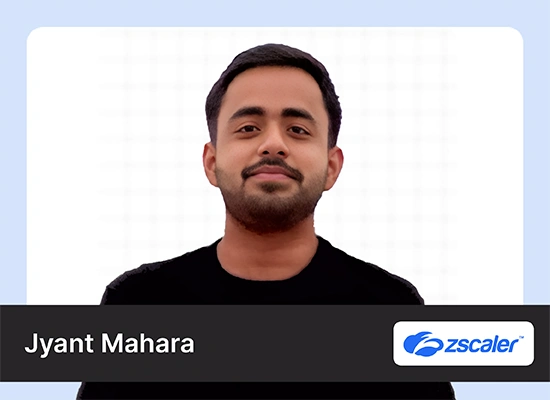Just binge-watched that K-drama over the weekend, and now your Netflix recommendations turn into an eerily perfect lineup of similar shows? That’s no coincidence. Netflix employs sophisticated data strategies to ensure it’s tough to hit the stop button once you start watching, or you can say Netflix uses Data Science. For those interested in a deeper dive, this Netflix data science blog covers how big data drives their decision-making. Yep, your weekend binge is a science project for them!
Even though this sounds complicated, anyone with a computer degree can comprehend how Netflix applies data science in these understandable ways. In this article, we will tell you how Netflix uses Data Science.
In this article, you will discover how Netflix uses data science to enhance viewer engagement. We will explore how Netflix employs AI, data science, and machine learning to analyze user behavior, optimize recommendations, and improve content delivery. Additionally, you’ll learn about the significance of data analytics in shaping Netflix’s strategies for personalized viewing experiences.

Overview
- Netflix uses data science to provide personalized user suggestions based on viewing history and interaction data.
- Thumbnails are dynamically personalized using data collection and A/B testing to enhance user engagement.
- Seamless streaming is achieved through adaptive bitrate streaming and predictive analytics to minimize buffering.
- Global content strategies like “Sacred Games” leverage data analytics for diverse audience preferences.
- Machine learning algorithms optimize Netflix’s recommendations by learning from user interactions.
- Ethical considerations about data usage and privacy are essential as Netflix balances user experience with responsible data practices.
Table of contents
Personalized Suggestions For Users
Netflix’s recommendation engine is the most prominent application of data science. The system uses information from your past viewing patterns to predict what you want to watch next. The recommendation system begins with extensive data collection, like
- Viewing History
- Viewing Context
- Interaction Data
From this raw data, Netflix engineers a multitude of features, such as:
- Temporal Features: Time of day, day of the week, and seasonal patterns.
- Device Features: Device type, screen resolution, and internet speed.
- Engagement Features: Completion rates, re-watching patterns, and skip rates.
Because of this, Netflix can more accurately tailor its suggestions to your preferences, which raises the possibility that you’ll find the upcoming episode intriguing.
For instance, if you’ve just finished watching “The Crown,” don’t be shocked if “Bridgerton” appears next. This isn’t a coincidence—Netflix discovered your preference for historical dramas and took action.

Thumbnail Magic: The Visual Nudge
Even the thumbnails are personalized! Netflix doesn’t just recommend shows randomly; it uses dynamic thumbnails to grab your attention. This involves several technical steps:
- Data Collection: This includes data on which thumbnails users click on the most.
- Feature Extraction: Using computer vision techniques, Netflix extracts key features from each frame of a show or movie. This includes identifying elements like faces, scenes, and actions.
- A/B Testing: A/B testing is like a taste test for websites and apps. Companies show one version (A) to half of the people and a slightly different version (B) to the other half. By comparing which version people like more or interact with more, they decide which option would be best. Netflix employs A/B testing to determine which thumbnails perform best for different user segments.
For example, if you’re drawn to futuristic images, you might see a thumbnail from the “Black Mirror” episode “San Junipero,” aimed at enticing you to click and watch. Fans of strong female leads may see thumbnails spotlighting prominent actresses, while those who favor high-stakes drama might get a thumbnail from an intense scene.
Seamless Streaming
At Netflix, data science is essential to delivering buffer-free, seamless streaming. This explains how it functions, utilizing several important technological ideas, such as adaptive bitrate streaming and predictive analysis.
Preloading and Predictive Analytics
Predictive analytics forecasts future occurrences by utilizing historical data. It’s similar to utilizing weather patterns to forecast whether or not it will rain tomorrow. Netflix uses information to infer what series you would be interested in watching. Netflix can pre-load episodes and segments of programming by examining trends. Pre-loading cuts down on buffering time by ensuring the subsequent scene or episode is ready to play immediately.
Adaptive Bitrate Streaming
Adaptive bitrate streaming modifies the video quality automatically according to your internet speed. The video quality is somewhat reduced to maintain uninterrupted video playback, even if your connection lags. The quality returns to normal as your connection speed increases.
Also read: 11 Amazing Applications / Uses of Data Science Today
Local Flavors and Global Tastes
When Netflix introduced shows like “Sacred Games,” it leveraged advanced data analytics techniques like Data Collection, Clustering Algorithms, Natural Language Processing, and A/B testing. Using these concepts, Netflix caters to a diverse content library that resonates with worldwide audiences.
The global success of shows such as “Narcos” has encouraged Netflix to invest in diverse, non-English content, catering to a global audience hungry for authentic storytelling.

Dive into Machine Learning
All your Netflix interactions, from selecting what to watch to pausing midstream, are input into highly advanced machine-learning algorithms. These continuously adjusting algorithms optimize future recommendations by learning from your tastes. Netflix’s Vice President of Product, Todd Yellin, explains that the algorithm considers several variables, such as watching durations and sequential behaviors, to create a highly personalized viewing experience.
AI and Human Insight
Netflix’s data science approach includes a blend of AI and human insights. Humans categorize content into hyper-specific genres, which the algorithms use to refine recommendation accuracy further. This human-machine collaboration is crucial in developing an intuitive recommendation system that feels both personal and predictive.
Ethical Considerations and the Future
While data science has undoubtedly helped Netflix become a titan in the streaming industry, it also raises ethical questions about privacy and user manipulation. How much should a company know about its users, and how should that information be used? Netflix assures that it uses data responsibly, but the debate continues.
Conclusion
Netflix’s use of data science is a prime example of how advanced technology can seamlessly integrate into everyday experiences. For viewers, it means a more engaging and personalized watching experience. For data scientists and industry watchers, it’s fascinating how big data can be harnessed to drive consumer satisfaction and business success. As we continue to explore the potential of data science in entertainment, the key takeaway is clear: the real power of data comes from how effectively it is communicated and implemented to enhance user experiences.
So, the next time you find yourself at 2 AM wondering, “How did I get here?” Remember, Netflix has turned binge-watching into a science. With a mix of machine learning models, predictive analytics, and a dash of creative genius, they’ve crafted a platform where every choice is a calculated step towards maximizing viewer satisfaction – and sleep deprivation.
Frequently Asked Questions
Ans. Netflix uses its data to analyze viewing patterns, preferences, and interactions to personalize content recommendations, optimize streaming quality, and decide on content investments.
Ans. Netflix employs AI and ML to enhance its recommendation engine, predict viewing habits, personalize thumbnails, optimize streaming, and continuously improve user experience based on real-time data.
Ans. Netflix personalizes content recommendations by analyzing user viewing history, interaction data, and contextual factors, using machine learning algorithms to predict and suggest content users are likely to enjoy.
Ans. Netflix uses A/B testing to experiment with different user interface elements, content recommendations, and marketing strategies, analyzing user responses to optimize the overall user experience and engagement.
Ans. Netflix uses two main types of data:
Video Content: Movies, TV shows, and other audiovisual content.
User Data: Viewing history, ratings, search history, account info, and device info.
This data helps Netflix personalize recommendations, improve the user experience, and make informed content decisions.





